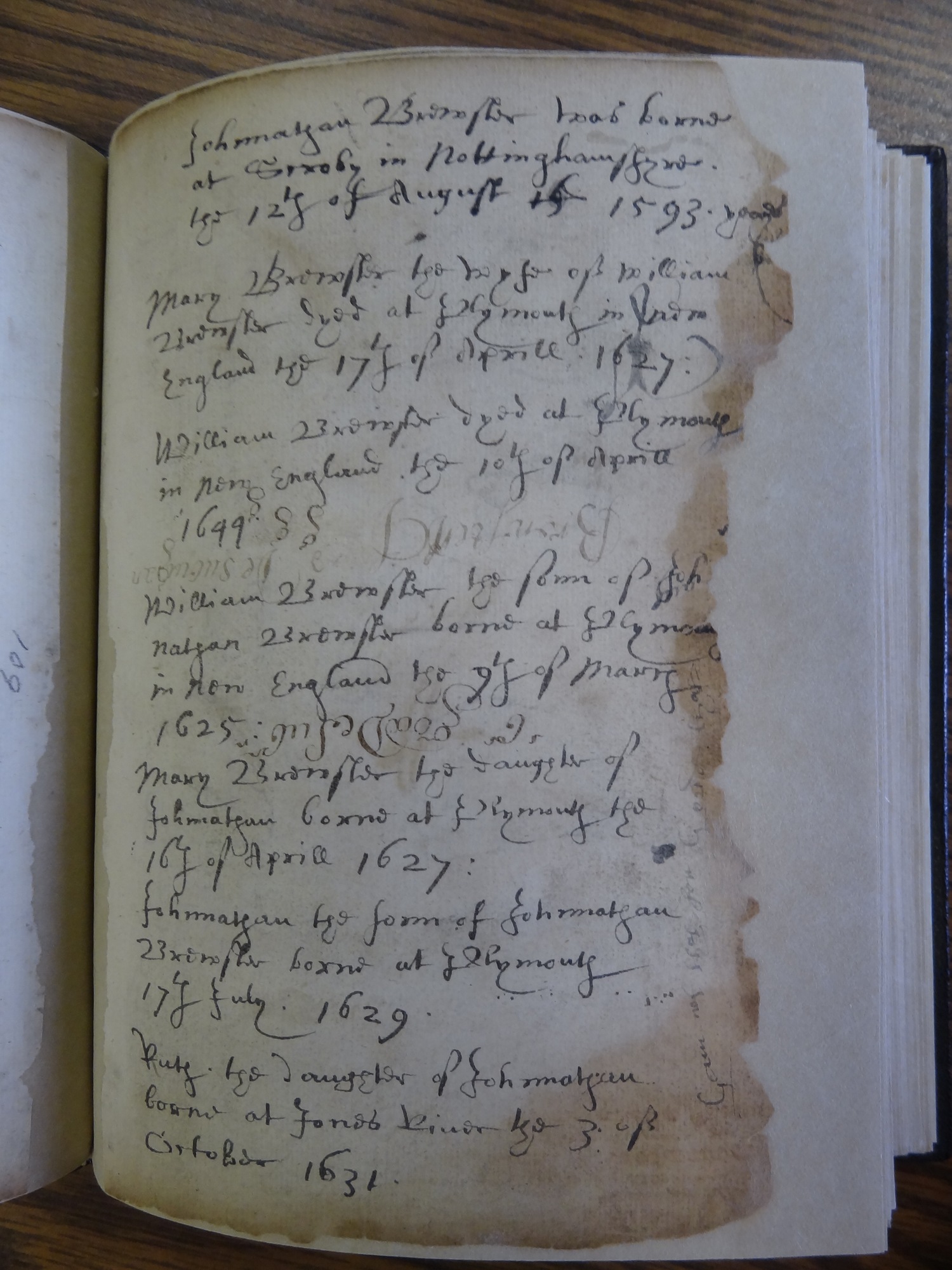 |
| Bachiler coat of arms |
Stephen Bachiler is my 13th great-grandfather. He led quite an interesting life.
He was born around 1560 in England and received a B.A. from St. John's college in Oxford in 1585/6. He was married four times, to progressively younger women, but Deborah was a daughter from his first wife, whose name might have been Anne, and who may have been the sister of Reverend John Bate. They were married by 1590 and she died before 1624.
Reverend Bachiler was frequently in trouble. Scandal and discord followed in his wake. He became the vicar of Wherwell, Hampshire, in 1587. He had puritanical leanings (in the theological sense) and was a notable nonconformist. In 1593 the Star Chamber cited him for making "lewd speeches tending seditiously" about Queen Elizabeth and her government. He was removed from his vicarage during a purge of Puritans in 1605, under James I. In 1614, he was once again before the Star Chamber when Reverend George Wighley accused him, his son Stephen, John Bate (who may have been his brother-in-law and/or cousin), of libeling and ridiculing him in verse. In the 1620s, the Bachilers moved to Newton Stacey a village in Hampshire. Somehow he incited his parishioners to act against the sheriff of the parish, who had to petition for aid to the King in Council.
Reverend Bachiler clearly knew other Puritans. Some of his children moved to the Netherlands, presumably to be part of the Puritan community there. In 1621, Adam Winthrop, father of Governor John Winthrop, made note in his journal of dining with Bachiler. Bachiler would have been well aware of the Puritan colony in Massachusetts. In the 1630s he joined a group of London merchants to form the Plough Company, which sent two shiploads of settlers to New England.
Stephen Bachiler himself arrived in New England in 1632, aboard the
William and Francis, the second of the Plough Company's ships. He was already at least 70 years old. His first wife, Anne, was already dead, and he had married twice more. It's not clear who came with him on this voyage, but his youngest daughter with Anne, Theodate Bachiler Hussey, was already in New England with her husband. Reverend Bachiler first settled at Lynn with her and tried to form a new church. However, there was constant unrest within the congregation. Furthermore, he didn't get along any better with the authorities in New England than he had in England. He is believed to have been the only dissenting vote among the ministers against the expulsion of Roger Williams, the founder of Providence. For these reasons, presumably, Bachiler was pushed out of his position as minister in Lynn by 1636.
He may have moved from Lynn to Ipswitch, but in 1637 he moved to Yarmouth. Rather, apparently, he
walked there. In winter. Considering he was about 77 at the time, that's pretty impressive. He didn't stay in Yarmouth long. The next year he left for Newbury. Again, he did not stay long and moved on to Hampton in 1639. Governor Winthrop noted that "Mr. Batchellor had been in three places before, and through his means, as was supposed, the churches fell to such divisions, as no peace could be till he was removed."
 |
This is the Hussey-Bachiler chair. It is in the Met.
Reverend Bachiler once sat here. |
In 1641, Bachiler was pushed out of Hampton when he "did solicit the chastity of his neighbor's
wife." The subsequent scandal kept him from finding employment in other parishes. He moved to Strawberry Bank, which is now Portsmouth. While living there, in 1648, he married Mary Magdalene Bailey, who was some 60 years his junior. Unsurprisingly, the marriage between the 26 year old widow and the 88 year old minister was...rocky. In 1650 they were brought to the Quarterly Court because, essentially, Mary was living with another man. In 1651, when Mary got pregnant despite being estranged from her husband, George Rogers was sentenced to 40 strokes for adultery. His partner, Mary, "for her adultery shall receive 40 strokes save one at the first town meeting held at Kittery six weeks after the delivery and be branded with the letter A." Some scholars believe Mary Bachiler was the inspiration for Nathaniel Hawthorn's novel,
The Scarlet Letter.
Reverend Bachiler returned to England, probably in 1651. He died and was buried in London on October 31, 1656. He was around 96 years of age.
Because some of his children stayed in New England, he counts a number of famous Americans among his descendants. These include Richard Nixon, Jennie Jerome (Winston Churchill's mother), Gerald Ford, H.H. Dow (founder of Dow Chemical), Meghan Markle (soon to marry into the British royal family), Daniel Webster, and John Whittier.
Our relationship to Reverend Bachiler (down to my great-great grandmother):
Stephen Bachiler -- Anne
- Deborah Bachiler Wing -- John Wing
- Daniel Wing -- Hannah Swift Wing
- Lydia Wing Abbot Hamilton -- Thomas? Hamilton
- Daniel Hamilton -- Mary Smith
- Samuel Hamilton -- Bethia Stewart Hamilton
- Mehitable Hamilton Godfrey -- Joseph Godfrey
- Sarah Godfrey Kinney -- Isaac Kinney
- Mehitable Kinney Doane -- Israel Doane
- Olive Doane Kinney -- Simeon Kinney
- Thomas Kinney -- Mary Houghton Kinney
- Julia Kinney Hancock -- Ernest Hancock
References:
Anderson, Robert Charles 1995 The Great Migration Begins: Immigrants to New England 1620-1633. New England Historic Genealogical Society.
Stephen Bachiler on Wikipedia







